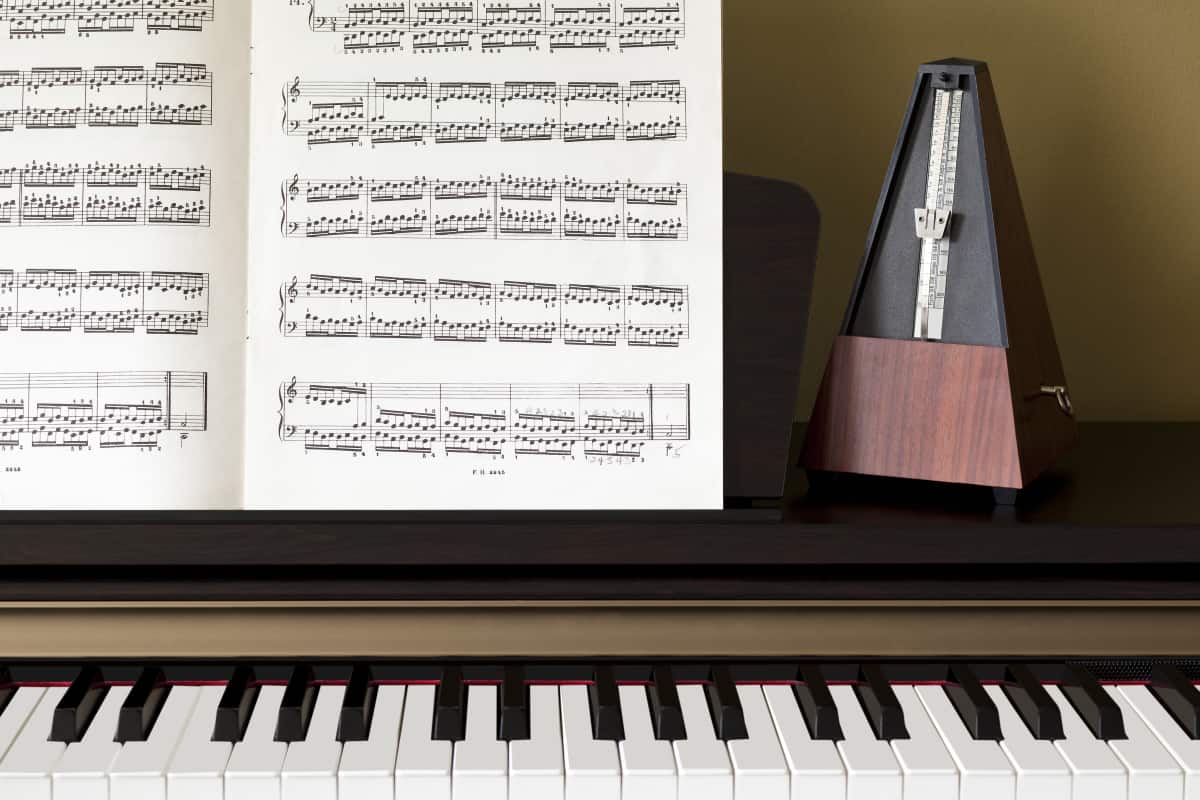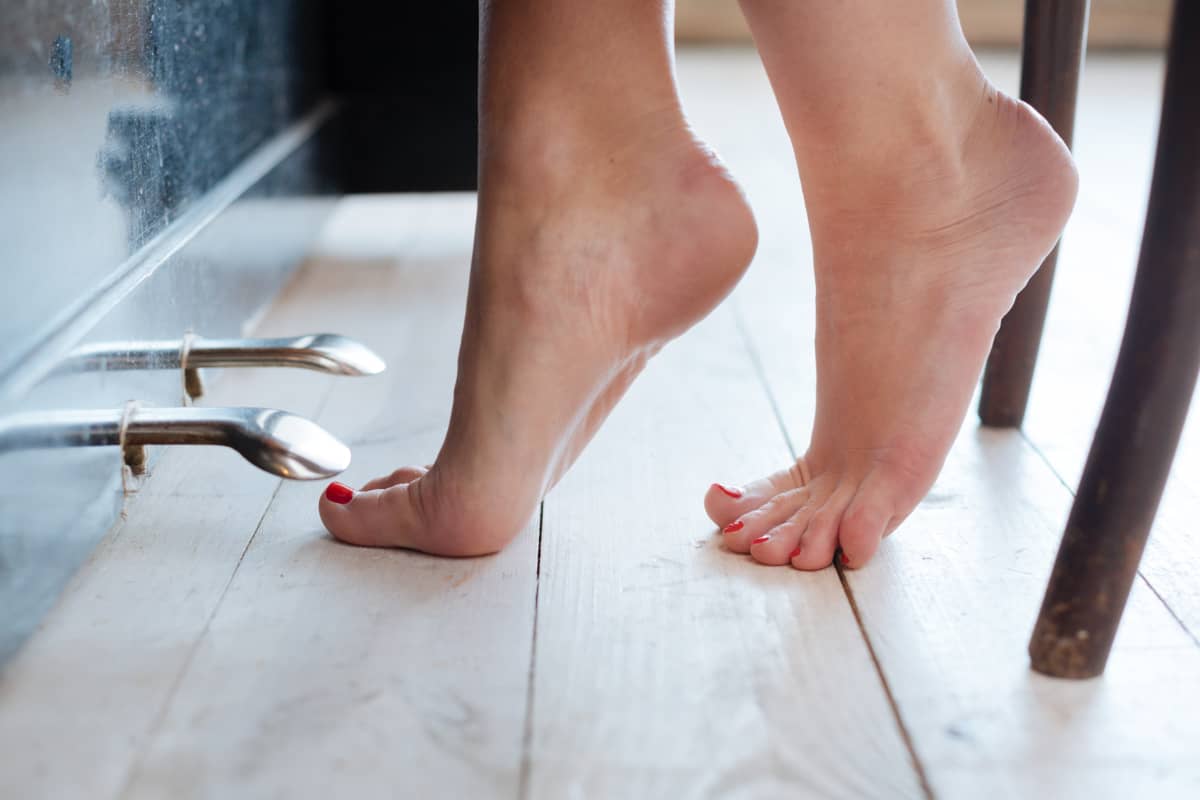How to have Better Rhythm As A Pianist
As a pianist, it can be tricky to maintain a consistent rhythm to play a piece of music correctly. Rhythm is one of the most important foundations of music and some people seem to have an innate sense of timing that’s hard to match. When you play the piano, there is a lot of activity as both hands playing notes and chords. It’s hard to stay coordinated and serve the artistic needs of the piece. So, it’s easy to fall into a messy rhythm and it can be hard to get it back when it’s lost. In this article, we will take a look at eight ways that you can improve your rhythm as a pianist.
Table of Contents
1.Playing With a Metronome
Many musicians learn their sense of rhythm when they play along with their metronome. This can be a frustrating experience initially, it takes some time to get used to the process, but it does get easier with practice. Playing an entire piece of music with the metronome can be a challenge, but it’s enormously rewarding when it all comes together. If you can’t handle an entire piece, use the metronome to brush up on tricky sections when you struggle to keep a consistent rhythm. This can help you to tighten up your playing and you will notice a gradual improvement over time.

2.Practice with Backing Tracks
This is a similar technique to playing with a metronome, but it’s a little more interesting. When you play along with other instruments it feels less sterile and more natural. Many modern piano tuition courses or books come with a set of backing tracks for practice. You can even find backing tracks on YouTube and other media sites that you can download for free. If you’re using a digital piano, there may be built-in backing tracks with an adjustable tempo.
3.Finding the “Pulse” of the Piece
The beat and rhythm of a piece of music can be two different things and you need to master both skills to play the piece well. If you can learn how to feel the “pulse” of the piece, you can express the rhythm as you play naturally. Pay close attention to the beat, then try to internalize it by tapping your foot, clapping your hands, nodding, counting, or swaying along. As long as your comfortable, there is no wrong way to do this. This process doesn’t have to be limited to playing the piano. You can practice this technique when you listen to other music and learn how to focus on the rhythm as the beats land. When you apply this technique to a specific piece of music, it can help to put the rhythm into context. When you can feel the rhythm before you start to play, you can achieve and maintain a consistent tempo throughout the entire piece.
4.Listening to Music
We touched on this briefly above, but it’s worth repeating here and it is an important point. When we learn to play, it’s very easy to fall into a mindset where we don’t tend to listen to much music. This seems strange, after all, most people want to learn how to play because they love listening to music and want to play it themselves. So, it’s very important to set aside some time to listen to music regularly, but in a conscious way. Pay attention to the rhymes in the music that you listen to and your sense of rhythm will improve. These skills can then be applied to your own playing and you may find it easier to maintain a consistent tempo naturally.

5.Tapping Your Foot
We’ve already talked about the importance of internalizing the beat. But, you can’t clap your hands when you’re playing, and tapping your foot is a good option. This may seem hard to maintain at first because you have so many other things to keep track of when playing. But, as you grow in confidence, you may notice that you tap your foot in-between playing notes and touching the pedals without a second thought.
6.Playing with Musicians
In these challenging times, it can be hard to play with other musicians, but it is possible with Skype and other applications. If you do get to play with real musicians, it can really make a huge improvement to your rhythm skills. As a pianist, you will be forced to respond to changes in tempo without overthinking things. This is a great way to improve your timing and really hone your skills as a pianist. This works well if you play with musicians around your own level or more advanced level of experience. If you play with musicians that are less advanced, you’re not likely to learn much and it’s a waste of time.
7.Counting Aloud
At first, you may feel self conscious when you start to count a rhythm aloud. This is fine when you’re practicing alone, but you may feel embarrassed if other people are around. But, this is a great way to vocalize a rhythm and you don’t need to use your hands to get started. This is a tried and tested method that has helped millions of musicians to understand and improve their rhythm skills. Every piano teacher will use this technique because it works and it will improve with practice. As you gain confidence, you will naturally vocalize more softly and then eventually the technique will be inaudible. Some people prefer to count numbers, some players use words and others may use certain syllables such as “Ta” or “Ti” to sound out a rhythm.
8.Rhythm Practice Apps
Most people now carry a smartphone which opens up an entire host of useful apps to use. There are many fantastic apps dedicated to helping you learn and practice your rhythm skills. This typically involves tapping at the screen along with the rhythms that are being played within the app. This is a great way to supplement the counting or tapping techniques we discussed earlier. You can really start to feel the different beats and learn how to read a wide variety of rhythm types.
Hopefully, these eight techniques will help you to improve your rhythm skills to help you get the most out of your practice sessions.

